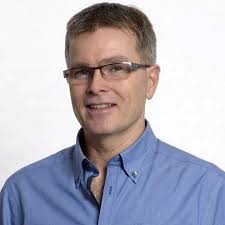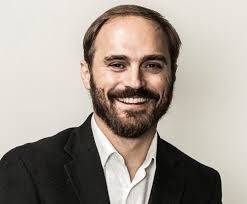What are the mysteries of the 'final frontier?' Four exceptional researchers identify the most pressing questions in space exploration, planetary science and cosmology, once again demonstrating York University's leadership on an international (and perhaps cosmic) scale.
Sometime in autumn 2023, a parachute will deposit a canister that will land in a Utah desert. Inside it will be rock samples from an asteroid called Bennu, with an orbit mostly situated between Earth and Mars. This operation has a lot to do with York University’s expertise and leadership in space science and engineering.
Bennu, roughly the height of a skyscraper at 500 metres in diameter, is interesting in many ways. For one thing, it poses a disarmingly real threat to us. It orbits close to Earth every six years and many space scientists believe there’s a small chance it could strike our planet in the next century.

This aside, Bennu has a deeper value. It could contain clues about the origin of the solar system – including our planet and every living being on it. (As Joni Mitchell put it so aptly in her song Woodstock, “We are stardust…”)

The rock samples are being brought to us courtesy of NASA’s OSIRIS-REx spacecraft and by the technical expertise of York’s Michael Daly, a professor of Earth and Space Sciences in the Lassonde School of Engineering.
Daly, director of York’s Centre for Earth and Space Science, has been working with the Canadian Space Agency since 2008 on developing the OSIRIS REx Laser Altimeter, an instrument to map the surface of Bennu.
“I developed the concept for the instrument, a very early part of the design. I put the plan together for analyzing the data and how we were going to observe the asteroid to capture the scientific information we required,” he explains.
Daly, York Research Chair in Planetary Science, and his colleagues had to consider a multitude of challenges. Can you get there easily? Does the asteroid spin slowly enough that you could touch down and collect a sample? Can you get the sample back?
Thanks to Daly’s mapping, the team discovered that Bennu has a very rocky surface and the researchers were able to locate a smooth area, the size of a few parking spaces, where the OSIRIS-REx spacecraft could sample.
The plan worked. The spacecraft extracted samples and is soon to make its way back to Earth. Daly is thrilled. Even though the bumpy surface threw a temporary wrench into their plans, “these surprises are valuable because you’ve learned something unexpected,” he says.
Daly is one of a growing community of scholars at York that focuses on every aspect of space and how it all came to be. This work has contributed to an increasing buzz among space experts around the world.

“York is very strong in space. I don’t think there’s any rival in Canada,” says Canada Research Chair in Planetary Science and Lassonde Professor Isaac Smith, who joined York in 2018, having come from the renowned Planetary Science Institute in Tucson, Arizona.
Smith was surprised by the reaction from friends when he first arrived in Toronto. “My neighbours asked what I did for a living. I told them I’m a planetary scientist at York… they didn’t even know the University had a space program.”
After earning his master’s in physics, Smith toured the American west where he became fascinated by geology, rock formations and deserts. He then applied that interest to the planet closest to us: Mars.
“Mars has always been part of humankind’s fascination. We grew more interested when the first telescopes made people wonder if there might be water and even life, in some form.”
While life has not been found, the idea of it continues to tantalize scientists.
“Mars’ geology is remarkably similar to our planet. I could take a picture of the Utah desert, and find another picture from a rover on Mars, and you wouldn’t be able to tell the difference.”
But Smith isn’t focused on the ages-old question of life on Mars. Instead, he wants to understand how the planet was born, how it has evolved. He believes this has a lot to do with ice.
“The story of Mars is incomplete if you don’t talk about ice. There’s ice all over the planet. In the past, it was water, and this shaped many of the landforms – giant canyons and glaciers, created 100 million years ago. The ice and water are important in the formation of Mars. I want to understand more,” he explains.

York Research Chair in Space Exploration Professor John Moores is also fascinated with planets. A professor in Earth and Space Science Engineering at Lassonde, he says the focus of his research group is to use what they learn in planetary science to support space missions.
Moores has a special interest in the red planet – especially the mysterious presence of methane. The gas was detected by Curiosity, the NASA rover that has been on Mars since 2012. Methane is produced by numerous natural, biological processes on Earth – from fossil fuels to cow flatulence. “We understand why it’s present on Earth, but we don’t expect it on Mars. To understand why it’s there, we need more data,” says Moores.
As much as Mars, Bennu, Earth and the ever-expanding universe is a mystery, there’s one force that unifies it all: dark matter. Professor Sean Tulin believes it’s at the root of, well, everything.

“Dark matter is the biggest missing piece of the puzzle we have in astrophysics,” says Tulin, assistant professor of physics and astronomy and Canada Research Chair in Particle Physics and Cosmology. “It’s easy to think, ‘There’s this mysterious substance in space that doesn’t impact what we do.’ But it provides the cosmic foundation for the entire structure in the universe, all the galaxies, and how they’re organized and how they form.
“Think of a birthday cake,” he suggests. “The regular matter – the planets and the stars – are the frosting but the dark matter’s the cake.”
Tulin uses mathematical calculations to investigate the properties of dark matter, then shares his ideas and predictions with astronomers to test them.
“The universe is about 14 billion years old. For about 10 billion of those years, it was dominated by dark matter. If we want to understand what the universe looks like, we have to understand the properties of dark matter. We still don’t. We can’t see it with telescopes. It’s a huge challenge to try to figure this out.”
And why is all this research so valuable?
Tulin says “We can use space as a laboratory for understanding the fundamental properties of nature.”
Smith explains “I’m motivated to share what I learn with students and the public. Helping them feel that wonder and amazement energizes me to learn and share more, do more research.”
Daly elaborates “Space exploration helps us to put ourselves in context in the universe. We’re part of something much bigger than Earth. And if we don’t explore space, I think we lose some of our basic humanity.”
Moores agrees. “By studying ancient environments on other planets we are able to get a better idea of how life originated on our own world, and how our own planetary systems, such as the climate, will change over time. This new knowledge about these wonders will expand our conception of what’s possible and how we fit into this vast cosmic dance.”
To learn more about Daly, visit his profile page. For more on Tulin, see his profile. To learn about Smith’s work, visit his profile. For more on Moores, visit his faculty profile page.
To learn more about Research & Innovation at York, follow us at @YUResearch; watch our new animated video, which profiles current research strengths and areas of opportunity, such as Artificial Intelligence and Indigenous futurities; and see the snapshot infographic, a glimpse of the year’s successes.
Paul Fraumeni is an award-winning freelance writer, who has specialized in covering university research for more than 20 years. To learn more, visit his website.
